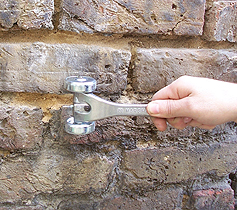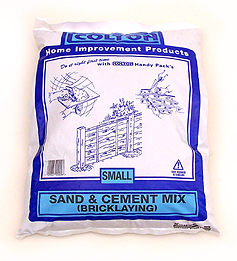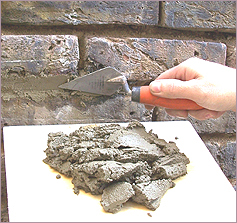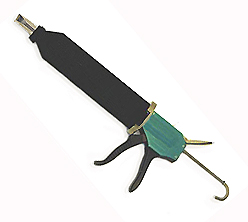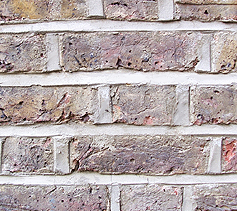 |
 |
Home
Tools
Drilling and Fixing
Putting Things Up
Repairs/Maintenance
Plumbing
Electrics
Woodwork
Decorating a Room
Tiling
Safety & Security
Saving Energy
House and Finance
Health&Safety
Disclaimer
Contact
Advertising
Useful Links
Site Map
| How to point bricks | |||||||||||||||
The mortar(mortar is sand and cement mixed with water) between brickwork will tend to crumble and fall out over long periods of time. |
|||||||||||||||
Re pointing is fairly straightforward but is a quite messy and very laborious job. Large areas will take quite some time. |
|||||||||||||||
| Follow the steps below to see HOW TO POINT BRICKS Firstly you'll need to rake out all the old crumbly stuff to a depth of around 12 mm so that there is plenty of space for the new mortar to adhere to. There are several options for removing the old mortar. A perfectly good method is to use an old screw driver and a hammer to dig it out |
|||||||||||||||
| Mortar removal tool |  |
||||||||||||||
Alternatively you can buy a special mortar rake. A hand operated rake is easy to use and costs around £10. |
|||||||||||||||
Hand mortar rake |
|||||||||||||||
| If you've got a lot of mortar to rake out using power tools may help. You can get either an attachment for an angle grinder. (shown opposite.) Alternatively you can get a mortar chisel attachment for a drill(NB this must be an SDS type drill which most DIYers don't have, but you could hire one) Using power tools is even more of a dusty messy job. Ensure you are wearing adequate protection. Dust mask, goggles etc. If you hire a professional system it may come with a dust extraction system. |
|||||||||||||||
| Mortar rake for electric angle grinder | |||||||||||||||
|
|||||||||||||||
Remove the old mortar with on of the above methods. |
|||||||||||||||
After removing the old mortar clean out all the loose dust with a paint brush. Then prior to reappointing dampen the area with a water spay or wet brush. This will stop the brickwork absorbing too much water from the mortar as it dries.
|
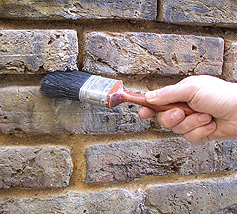 |
||||||||||||||
| Pointing mortar can be bought in various size bags from most DIY shops |
|
||||||||||||||
| Mix up a small amount of pointing mortar. Rather than buy a bag of sand and a bag of cement, for small jobs, I find it much easier to buy a ready mixed mortar mix. You don't have to worry about getting quantities of the sand cement mix right. Just add water as directed. I should end up as a very thick creamy mix. | |||||||||||||||
|
|||||||||||||||
Pointing tools Next comes the laborious bit. Load some of your cement mix on to a pointing hawk. A pointing hawk is simply a flat surface with a handle underneath.(also used when plastering internal walls). You can buy one for around £10 or simply make one out of some thin scrap wood. |
|||||||||||||||
|
|||||||||||||||
As an alternative to a pointing trowel you may prefer to use a mortar gun. These are very effective and ensure the mortar gets right into the gaps without leaving any voids. They work very much like a sealant applicator. Choose one that has a reverse action like the Durgan 45 so that you can refill it easily. (£25-30) |
|||||||||||||||
| Durgan 45 mortar gun.: |
|||||||||||||||
|
|||||||||||||||
A finished piece of brickwork |
|||||||||||||||
NB WARNING Working at heights can be dangerous. You must ensure that you use appropriate access equipment. It is your responsibility to ensure your own safety. |
|||||||||||||||
